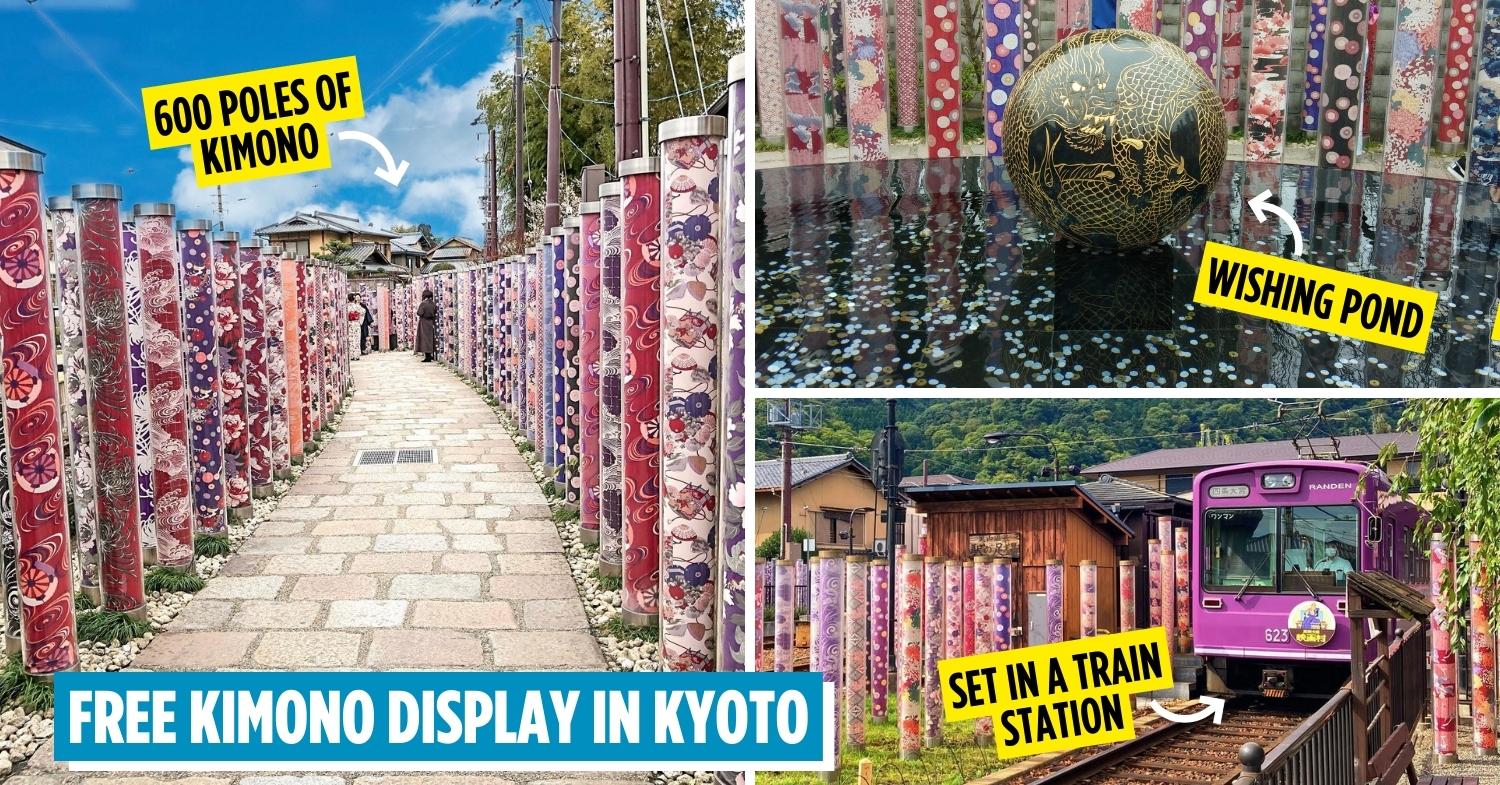Kimono Forest
Covid-19 has been hitting large gatherings hard, and festival-goers can’t help but stare helplessly at their kimonos collecting dust in the closet. But with Kimono Forest, these merrymakers have an excuse to don their traditional outfit at any time of the day without attracting stares.
Poles encasing kimono fabrics light up after sunset
Located right next to Arashiyama Station in Kyoto Prefecture, Kimono Forest has a 15m-long path lined with 600 acrylic poles that contain kimono fabrics of various designs.
The kimonos were dyed through the traditional Kyoyūzen (京友禅) method, where Kyo stands for “Kyoto” and yūzen meaning “dyeing method where rice paste is applied on the kimono fabric to prevent dyes from mixing”.
This style was invented by Yūzensai Miyazaki, a fan painter active in the Edo period. Kimonos that adopt Kyoyūzen generally include an abundance of gold and silver leaf designs, and they often come in vibrant colours.
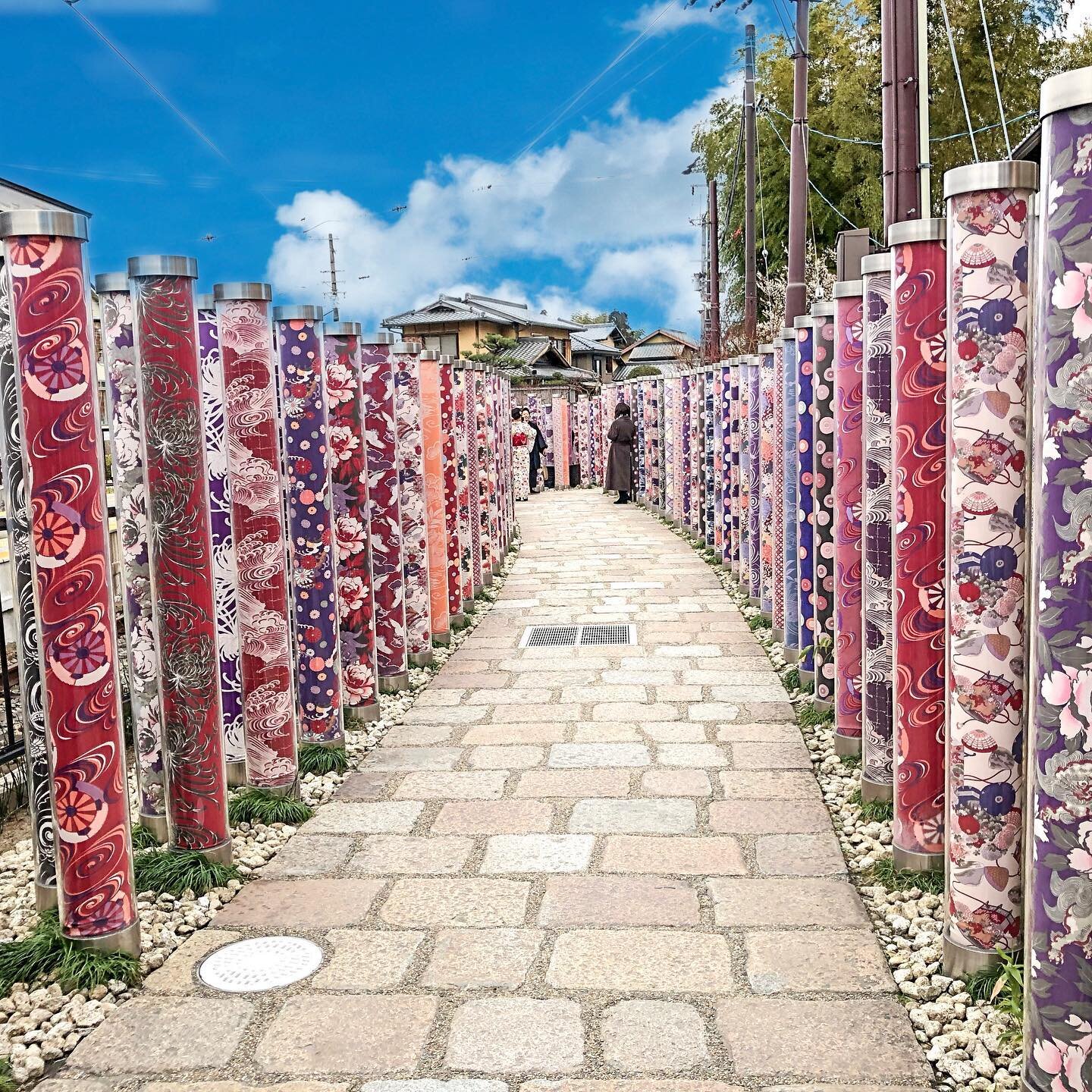
Image adapted from: @lifeisjust_beautiful
With so many yards of kimono fabric in the Kimono Forest, fans of the garment needn’t worry about being judged for wearing one there on a regular day. Furthermore, the poles are lit up as the sun sets till 9pm, recreating a festive vibe for those whom Covid-19 has deprived enough galas of.
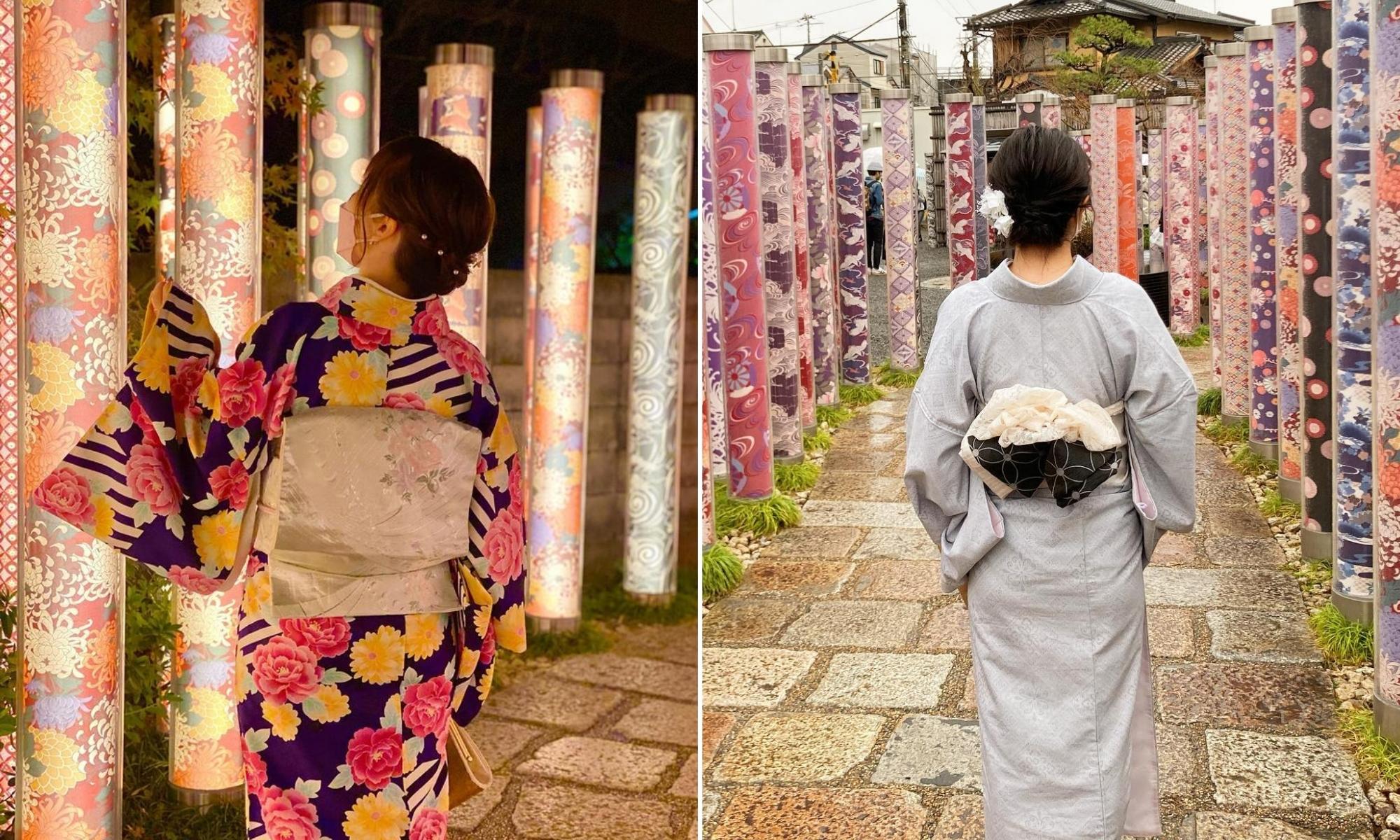
(Left to right) Nighttime and daytime.
Image adapted from: @yukorin08 and @odekake_shashin
Wishing pond
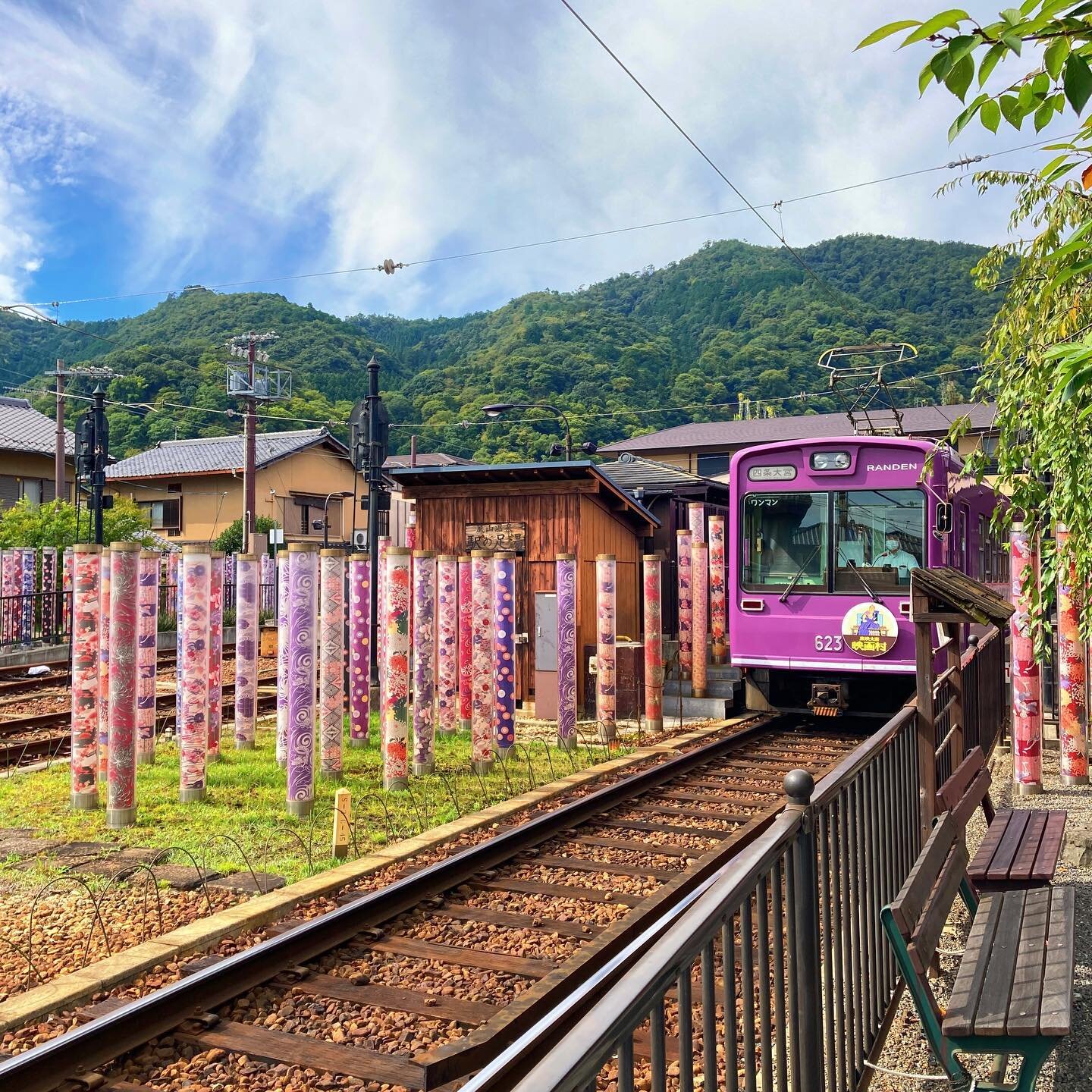
Image adapted from: @ichiro.takahashi
A 2-minute walk along the kimono pole-lined path from Arashiyama Station will take you to Ryū no Atago (竜の愛宕; Dragon of Atago), a sphere with a gold dragon motif emblazoned on it. Sitting in a small pond, the sphere reportedly symbolises the nearby Tenryūji temple’s dragon, which guards the train station.
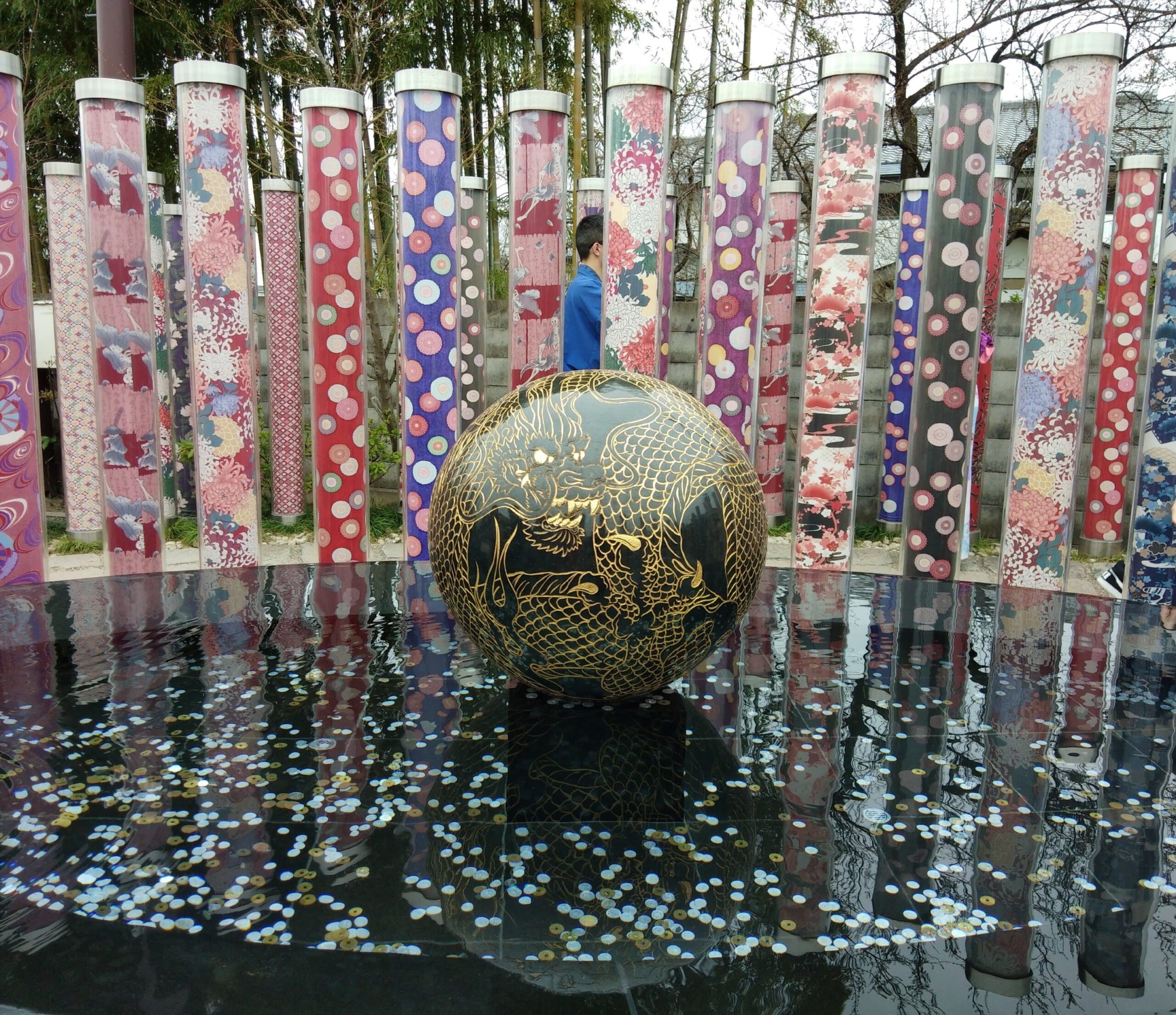
Image adapted from: @urarashouu
Thanks to its association with Tenryūji temple (天龍寺), which translates into Heavenly Dragon Temple, the sphere is revered as a spiritual spot capable of recharging your mental energy. Many visitors, in hopes of improving their life conditions – be it mental or physical – throw coins into the pond and make their wishes.
To rest your feet, enjoy a foot bath back at Arashiyama Station for ¥200 (~USD1.39). Towels are provided, and there is no time limit to the foot-soaking experience. Tickets can be purchased at the station’s ticket counter.
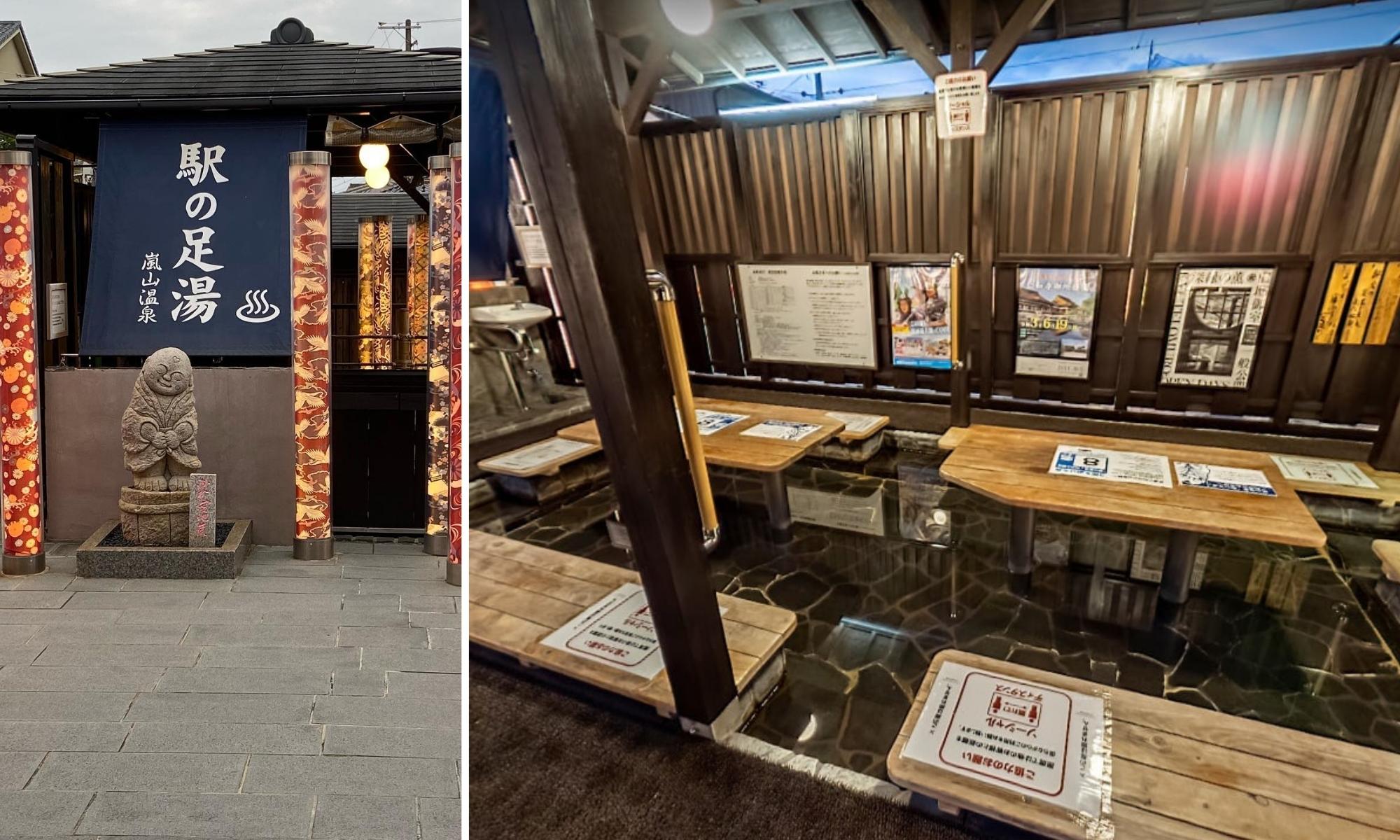
Image adapted from: @japaniamania and Toyo Fujita
Sightseeing around Kimono Forest
Kimono Forest is directly linked to Arashiyama Station, so you don’t have to worry about getting lost. If you’re up for two forest adventures in 1 day, consider visiting Arashiyama Bamboo Grove, one of the 100 Soundscapes of Japan.
While the bamboo grove is aesthetic enough to be a photo-taking spot on its own, we’re sure that wearing a kimono there will make your photos turn out even better.
Kimono Forest
Address: 20-2 Sagatenryuji Tsukurimichicho, Ukyo Ward, 616-8384 Kyoto
Arashiyama Station Foot Bath
Admission: ¥200 (~USD1.39)
Address: 20-2 Sagatenryuji Tsukurimichicho, Ukyo Ward, 616-8384 Kyoto
Opening hours: 9am-8pm, Daily (Mar-Nov) | 9am-6pm, Daily (Dec-Feb)
Contact: 0758-82-5110 | Arashiyama Station Foot Bath website
Also check out:
- Giant squid statue that attracts over 4,000 visitors per month
- Waterfall with themed yearly light exhibition
- Cafe that does custom latte art of any image
- Forest with 360° Autumnal View
- Shimanami Kaido guide
Cover image adapted from: @lifeisjust_beautiful, @ichiro.takahashi and @urarashouu
